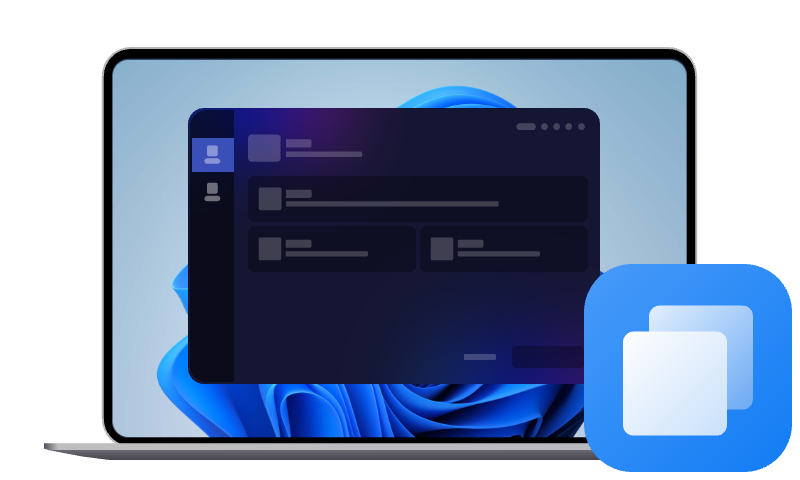Macrium Reflect Clone SSD to Larger SSD with Full Capacity
You can use Macrium Reflect or an easier alternative to clone smaller SSD to larger SSD with full capacity as they offer users an option to change partition size. Scroll down to learn more!
Help!!! Macrium Reflect Clone SSD to Larger SSD
I'm using Windows 10 64-bit, and trying to clone my 500 TB SSD C:/ drive to a new 1 TB SSD using the free version of Macrium Reflect, and I see my start up drive has three partitions, the reserved partition, the C partition and one called "none".
Does anyone know what the "none" partition is for, and can I delete it? The problem I'm running into is that I can't change the size of the middle partition with the "none" partition in the way, and I'm unable to reorder them. They won't drag or move. Could anyone please advise?
- Question from superuser
Macrium Reflect 8 or X offers users an option to change the partition size of the destination disk after adding it and letting it fill up. Or you can manually drag these partitions to a new SSD. Be sure to copy the C: drive last, and it will automatically fill the disk space.
Note that the partition marked as “none” is a recovery partition for factory reset, which is not essential, but still a good idea to troubleshoot your computer.
Clone Smaller SSD to Larger SSD using Macrium Reflect [Full Capacity]
Step 1. Download, install, and launch Macrium Reflect 8 or X for cloning. Then, find the disk you want to clone and click Clone this disk... at the top location.
Step 2. Then, click Select a disk to clone to and select the larger SSD as the target disk.
Step 3. Click Copy Partitions and select Shrink or extend to fill the target disk. It will automatically resize the partition of the larger SSD. Click Next twice and OK to confirm.
Note that all target volume data will be overwritten. Click Continue to proceed.
Easier Way to Clone SSD to Larger SSD [Auto Resize]
AOMEI Cloner is a dedicated hard drive and SSD cloning software that can clone SSD to larger SSD in Windows 7, 8, 10, 11, etc., and Windows Servers without extra setup, as it will automatically add unused space to all partitions during cloning. What’s more, it clones only the used sectors of a drive, greatly saving time and effort.

- Easy to use and no technical skills required.
- Clone any types of disks, e.g., HDDs/SSDs, MBR/GPT disks, SATA/M.2/PCIe/NVMe drives, etc.
- Clone OS only for fast system migration.
- Bootable clone a drive, including the operating system, system files, and settings, etc., required to start Windows automatically.
- Support advanced cloning features, such as optimize SSD disk performance during cloning, convert disk types while cloning MBR to GPT, or vice versa, WinPE clone, etc.
Click the download button to get started! Please note that the destination disk will be overwritten or deleted during cloning. Be sure to backup important data (if any) on it to prevent permanent loss.
Step 1. Connect the larger SSD to your computer and be sure it’s recognized. Then, open AOMEI Cloner, click Clone > Disk Clone.
Step 2. Then, select the smaller SSD as source disk and larger SSD as destination disk. Click Next to continue.
Step 3. By default, this software will enable Edit Partitions to automatically add unused space to all partitions while cloning SSD to larger SSD. You don’t need to set it up manually. Optionally, click it to confirm and check SSD Alignment for faster speed. At last, click Start Clone.
🤝Notes:
✔ SSD Alignment: It helps a lot to improve SSD disk performance and lifespan.
✔ Edit Partitions: Optionally, click it to manually adjust partition size or convert disk partition styles (one MBR, one GPT).
✖ Sector by sector clone: It clones all sectors of a drive, including empty and bad sectors, and you don’t need it unless cloning a bitlocker encrypted drive. Just leave it unchecked.
Conclusion
In general, cloning makes an exact copy of the source drive and leave extra space as Unallocated unless you change the partition size of the destination disk manually and it is available in most reliable cloning software, such as Shrink or extend to fill the target disk in Macrium Reflect to clone smaller SSD to larger SSD.
Be sure to enable it, and the name varies in different software. In another dedicated cloning software, AOMEI Cloner, this feature is called Edit Partitions, and it’s activated automatically while cloning SSD to larger SSD.

